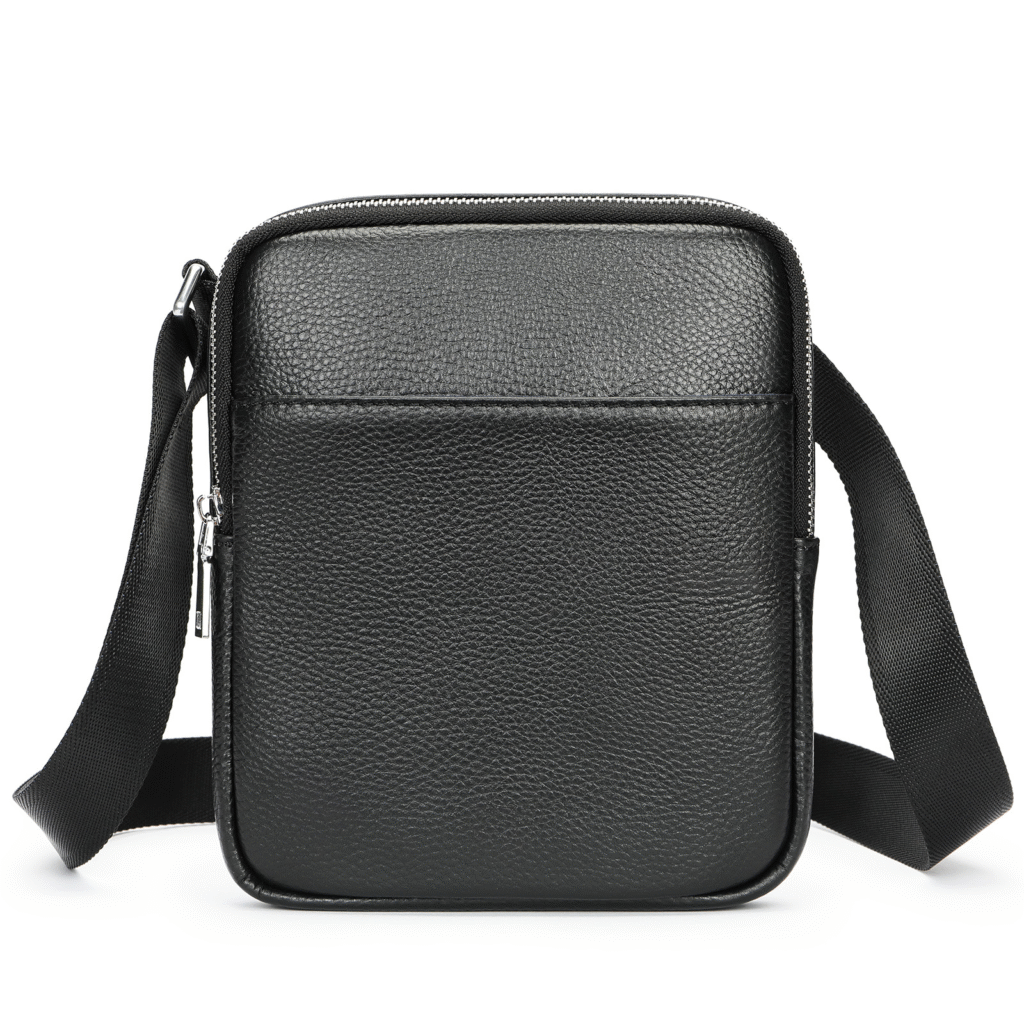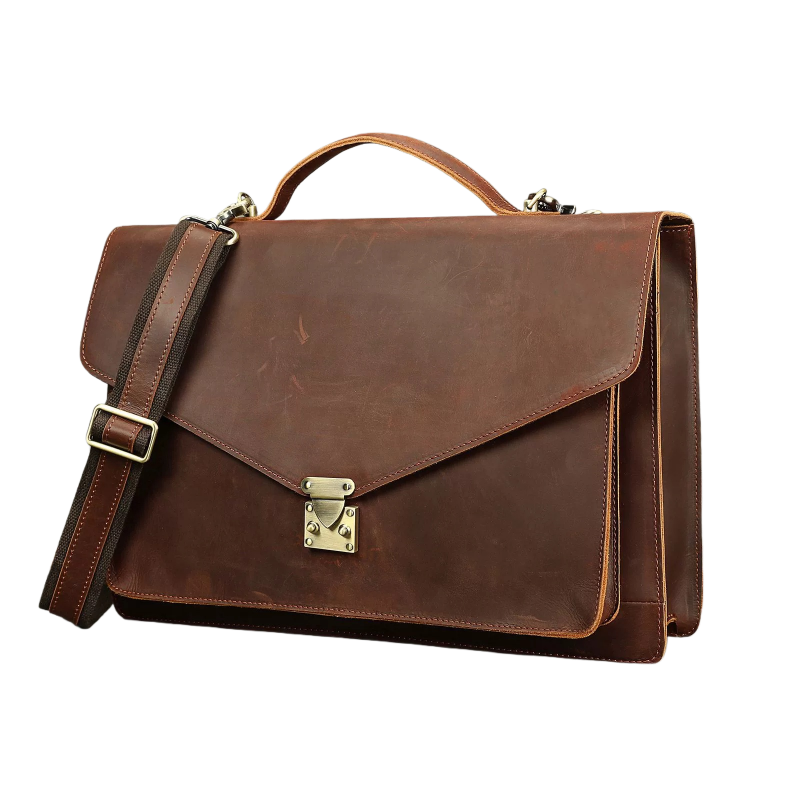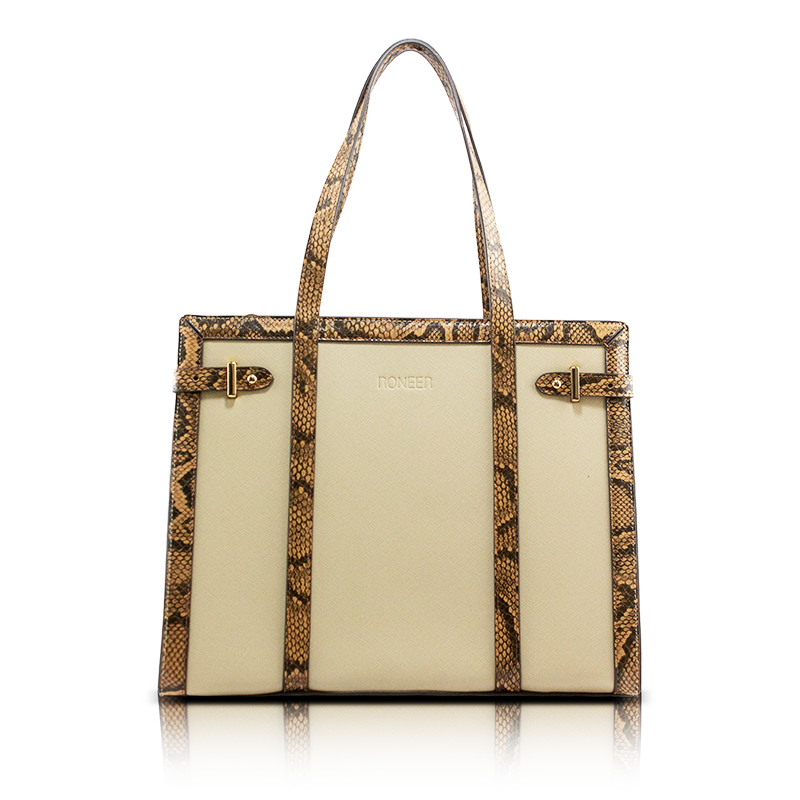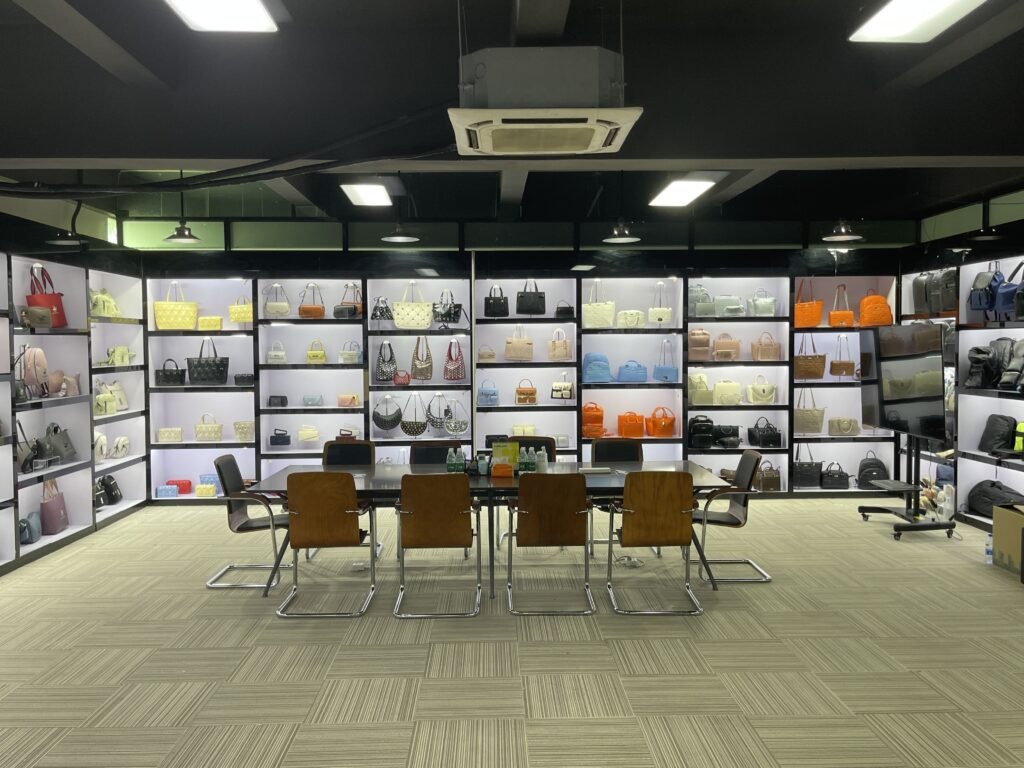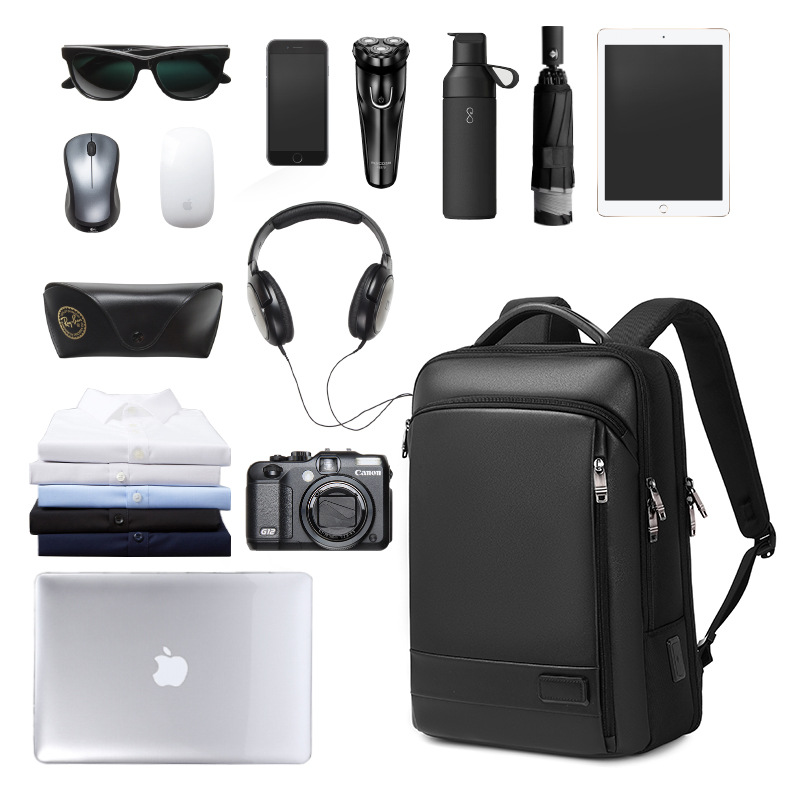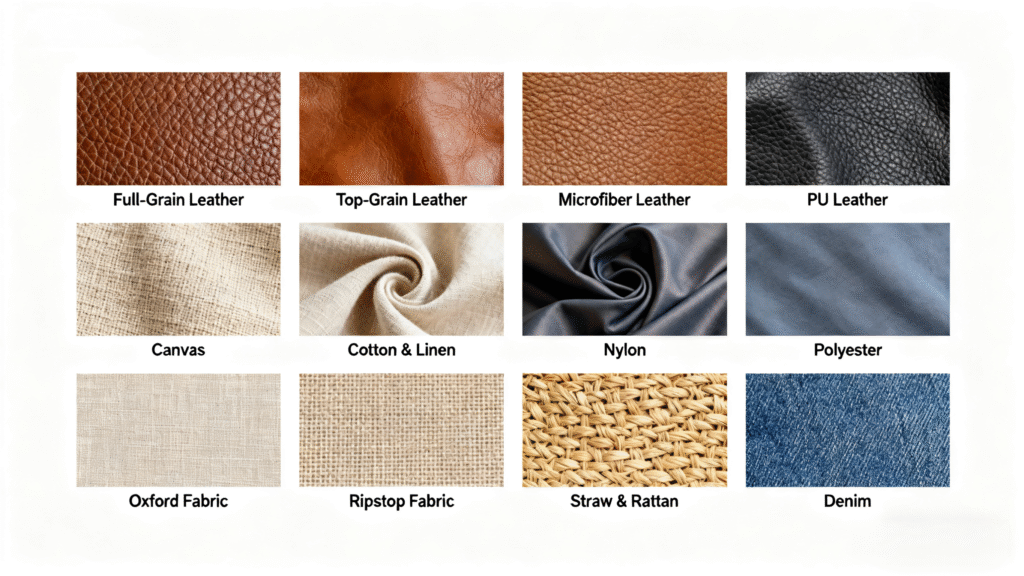In fashion accessories, bags have always played an indispensable role. It is not merely a storage tool; it is also an expression of one’s status and taste. Different types of bags carry different histories and cultures. Among them, the two most representative types are the clutch bag and the handbag.
Although they all belong to the commonly used types of bags, they have obvious differences in design concepts, uses, and suitable scenarios. The Clutch bag is renowned for its simplicity and elegance. It often appears on formal occasions, symbolizing the pursuit of details and taste. The handbag, due to its practicality and multi-functionality, has become an indispensable companion in daily life.
In this article, let’s delve into these two types of bags together. This not only helps us make more precise choices but also enables us to see the delicate balance between fashion and practicality. We will explore the differences and values between a clutch bag and a handbag from all aspects, including history, usage, common sizes, and suitable scenarios, to help you fully understand them. To help you make the right choice between the two.
What is a Clutch Bag?
Did you know? The clutch is one of the oldest personal accessories, and its origin can be traced back to ancient times. Early clutch bags were just simple, small bags used to hold coins or small items. However, the modern clutch we are familiar with today originated during the Art Deco Movement in the 1920s. At that time, women pursued a freer lifestyle, and clutch bags thus became a fashion symbol of independence and elegance.
Uses and Occasions
A clutch bag is designed for minimal storage. Its purpose is not to carry everything but rather the essentials: a phone, keys, lipstick, or a small wallet. Because of its refined and compact nature, the clutch is most often used in formal settings—cocktail parties, weddings, evening banquets, or red-carpet events. It functions less as a utility item and more as a statement piece that complements an outfit.
Typical Sizes
Some common clutch bags are generally between 15 and 30 centimeters wide, with a thin structure that is convenient for holding with one hand or clipping under the armpit. The flat design exudes elegance and refinement, further highlighting why people choose them: style over practicality.
Historical Evolution
In different eras, clutch bags have also been constantly evolving in response to cultural demands. For instance, in the 1950s, the highly structured satin clutch bag became a must-have item for Hollywood stars; In the 1980s, bold oversized clutch bags embodied the bolder fashion trend of that era. Today, clutch bags remain classic accessories, seeking a balance between traditional and modern design.
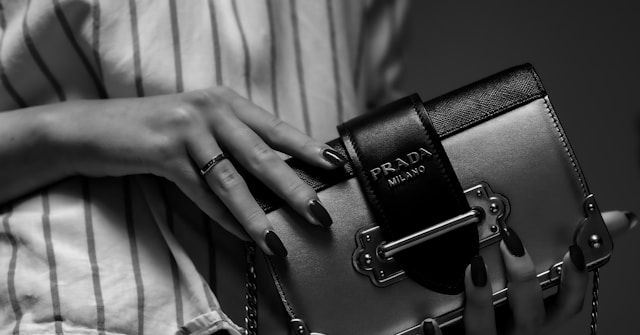
What is a Handbag?
Handbags have a longer history and are more practical. In medieval Europe, both men and women used small bags, while handbags gradually evolved into their modern form in the 19th century with the rise of railway travel. As people need to carry more personal items safely, larger and stronger bags have become indispensable. Over time, these practical bags have gradually developed into fashionable daily necessities, integrating practicality and fashion.
Uses and Occasions
Unlike the clutch, the handbag is made for everyday life. It is designed to carry a variety of items: wallets, makeup, notebooks, documents, and even small electronic devices. Its versatility allows it to adapt across contexts: from business meetings and shopping trips to travel and casual outings. In many cultures, the handbag has also come to symbolize readiness and professionalism.
Typical Sizes
There are various sizes and shapes of handbags. In the table below, I have sorted out some common ones
| Size Category | Dimensions (Approx.) | Suitable For |
|---|---|---|
| Small Handbags | 20–25 cm | Casual outings, light travel |
| Medium Handbags | 25–35 cm | Work, daily use, regular activities |
| Large Handbags / Totes | 35–45 cm+ | Carrying laptops, documents, and working long days |
Historical Evolution
In the 20th century, handbags reflected social changes. During World War II, due to material rationing, practical handbags dominated. In the 1960s and 1970s, single-shoulder bags became a symbol of modern professional women. Today, handbags remain at the core of individual expression and functional design, taking into account the demands of structure, comfort, and lifestyle.

How are Clutch Bags and Handbags Made?
Although they are both in the form of bags, there are still obvious differences in their manufacturing processes. As a worker with over ten years of experience in the bag industry, I have witnessed with my own eyes the differences between these two types of products in terms of material selection, process requirements, and final presentation effects. It is precisely these subtle and professional differences in craftsmanship that determine their uniqueness in market positioning and application scenarios.
Clutch Bag Production
-
-
Starts with a design blueprint focused on structure and aesthetics.
-
Premium materials like calfskin, satin, or metallic finishes are common.
-
Since it’s compact, hand-finishing is critical—stitching must be precise and edges polished.
-
Some clutches involve decorative craftsmanship, such as beadwork or embroidery, which requires artisanship.
-
Handbag Production
-
Begins with material selection for durability, often full-grain leather or reinforced fabrics.
-
The process includes multiple stages: cutting, skiving, assembling panels, lining, attaching zippers, and reinforcing handles.
-
Hardware (buckles, clasps, zippers) must be stress-tested for repeated use.
-
Unlike clutches, handbags go through rigorous ergonomic testing to ensure comfort when carried for hours.
What are the Main Differences Between a Clutch Bag and a Handbag?
| Dimension | Clutch Bag | Handbag |
|---|---|---|
| Size | Small, typically 15–30 cm | Ranges from small (20 cm) to large (45 cm+) |
| Capacity | Holds only essentials (phone, keys, lipstick) | Holds daily necessities (wallet, makeup, documents, tech devices) |
| Structure | Slim, often without straps, handheld | Includes handles or straps, multiple compartments |
| Primary Use | Style-focused, minimal storage | Practical, functional, everyday utility |
| Occasions | Formal events: weddings, parties, galas | Daily life: work, shopping, travel, casual outings |
| Design Focus | Elegance, statement, decorative details | Durability, comfort, organization |
| User Behavior | Rotated occasionally for special events | Used daily or regularly as a main accessory |
Why Should You Choose to Invest in Clutch Bags and Handbags?
Investing in clutch bags and handbags is not merely about pursuing fashion; it is also a strategic decision based on practicality, market value, and cultural significance. These two types of products play different but complementary roles in modern wardrobes and consumer behavior.
Long-Term Value
Handbags, especially those designed with durable materials and functional structures, provide consistent long-term value. They are used daily, which ensures stable demand in the market. For professionals, a reliable handbag enhances productivity, offering both organization and style in one accessory.
Clutch bags, while less frequently used, hold symbolic value. They are chosen for milestones—such as weddings, banquets, or business events—where appearance matters as much as utility. Because of their association with memorable occasions, clutch bags are often kept for years as timeless pieces rather than being replaced frequently.
Market Advantage
From a commercial perspective, handbags generate steady sales volume, while clutch bags create high-margin opportunities. Special-edition clutches or seasonal collections attract customers seeking exclusivity, while handbags secure repeat purchases due to wear and replacement cycles. A balanced portfolio that includes both ensures resilience in different market conditions.
Lifestyle Relevance
For individuals, the decision to invest in these two types of bags reflects different lifestyle needs. A handbag becomes a daily partner, essential for work, travel, and personal organization. A clutch bag, on the other hand, is a style enhancer, chosen for the moments that matter most. Owning both ensures readiness for any situation—from a regular workday to a formal evening event.
Emotional and Social Value
Beyond functionality and economics, bags carry emotional and social weight. A well-crafted handbag can project professionalism and confidence in everyday settings. A carefully chosen clutch can leave a lasting impression at a formal event. These subtle yet powerful messages make bags more than accessories—they are tools of self-expression.
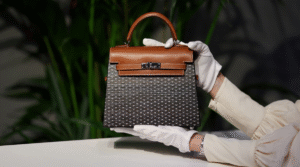
Care Tips for Your Handbag and Clutch Bag
Handbags or clutch bags are not only practical accessories but also a long-term investment. So you need regular maintenance to extend its service life, keep its appearance, and preserve and increase its value. Whether you use your bag every day or only on special occasions, regular maintenance can bring about remarkable results.
- Storage: Please try to keep your bag in a dust cover to avoid direct sunlight and prevent fading.
- Shape maintenance: When you are not using it, filling the handbag with soft tissues or fabric can better maintain its shape. It is best to lay the handbag flat to avoid bending.
- Cleaning: During daily use, dust and other substances may accumulate on the surface of the bag. In this case, you need to gently wipe the surface with a soft cloth. For handbags, leather conditioner helps maintain flexibility, while a gentle fabric cleaner is safer for delicate materials.
- Recycling: You don’t have to use the same package every day – changing to another package can reduce wear and tear.
- Hardware protection: Occasionally, polish zippers, buckles, and other metal parts to keep them looking fresh and working smoothly.
Conclusion
Although clutch bags and handbags are both essential fashion accessories, their uses are completely different. Clutch bags are a symbol of elegance. They are small and exquisite, making them suitable for occasions where style outweighs functionality. Handbags, on the other hand, are reliable daily companions, combining both beauty and practicality.
For brands, designers, and buyers, understanding the differences among them is key to creating collections, making strategic investments, and providing lasting value. As long as they are properly maintained, these two types of bags can not only enhance one’s personal style but also have long-term economic and emotional value.
Whether you choose a clutch or a handbag depends on whether your customer base is elegant at night or practical and efficient during the day. Both deserve a place in any curated collection.
RONEER is a bag manufacturer based in Guangdong, China, with its own factory and 18 years of experience. We constantly provide customers with high-quality bags to help you achieve brand success.
If you are interested in us, please contact us! Thank you for your reading!

